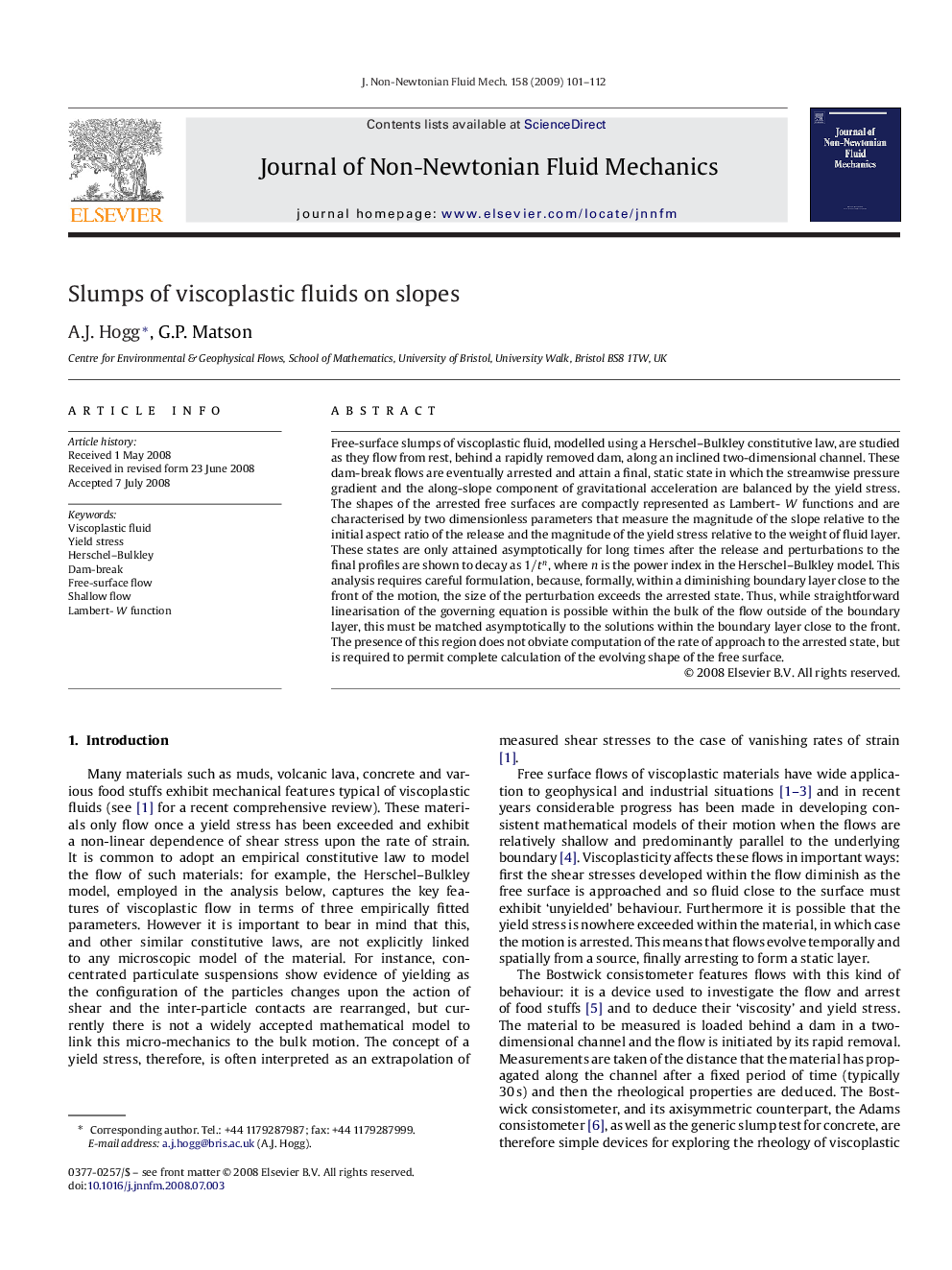| Article ID | Journal | Published Year | Pages | File Type |
|---|---|---|---|---|
| 671279 | Journal of Non-Newtonian Fluid Mechanics | 2009 | 12 Pages |
Free-surface slumps of viscoplastic fluid, modelled using a Herschel–Bulkley constitutive law, are studied as they flow from rest, behind a rapidly removed dam, along an inclined two-dimensional channel. These dam-break flows are eventually arrested and attain a final, static state in which the streamwise pressure gradient and the along-slope component of gravitational acceleration are balanced by the yield stress. The shapes of the arrested free surfaces are compactly represented as Lambert- WW functions and are characterised by two dimensionless parameters that measure the magnitude of the slope relative to the initial aspect ratio of the release and the magnitude of the yield stress relative to the weight of fluid layer. These states are only attained asymptotically for long times after the release and perturbations to the final profiles are shown to decay as 1/tn1/tn, where n is the power index in the Herschel–Bulkley model. This analysis requires careful formulation, because, formally, within a diminishing boundary layer close to the front of the motion, the size of the perturbation exceeds the arrested state. Thus, while straightforward linearisation of the governing equation is possible within the bulk of the flow outside of the boundary layer, this must be matched asymptotically to the solutions within the boundary layer close to the front. The presence of this region does not obviate computation of the rate of approach to the arrested state, but is required to permit complete calculation of the evolving shape of the free surface.
